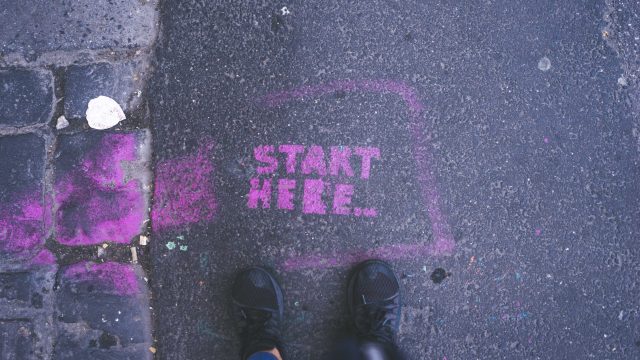There’s a popular expression in the culinary world “The first bite is with the eye.” Strangely enough this expression is equally applicable on the Amazon marketplace, where customers will often make the decision on whether or not they make a purchase based on the first image they see of a product.

Because of this, as an Amazon FBA seller, it’s really important that you get this “first bite” right by making sure that you have the best quality product imagery you can. If you don’t, you may find yourself losing sales to other sellers that have more appealing imagery on their own Amazon listings.
In this article, we’re going to give you the expert advice you need on making your Amazon product imagery as appealing as possible.
Remember though that improvements you make to a listing do of course benefit other Sellers on the same item, which is why this can be overlooked.
Why is Amazon product imagery important?
Before we get to how to improve your product images, it’s good to have an understanding of why product imagery is so important for your Amazon listing. Product imagery is probably the most important part of product listing optimization.
Listing optimization also includes things like an accurate and descriptive title, a product description, bulleted product features, etc. However – it’s true that on Amazon, a picture is worth a thousand words – and even if your textual descriptions are as good as they can be, if your images are terrible you will struggle to sell many products.
Let’s run through specifically why excellent product imagery helps drive sales on Amazon.
Good images make a good first impression
The image is the first thing the eye is drawn to – whether it’s on the product page itself or on the Amazon search results page. People are naturally inclined to draw their conclusions from the imagery you provide first, and then go into the textual description to discover more about the product.
If someone is put off by the image, either because it’s of poor quality or because it doesn’t accurately match what they think the product will be, they won’t go any further and you’ve potentially just lost a sale.
Good images increase conversion rates
As a follow-on to the point above, really good product imagery will cause more people to buy. This is the whole reason you’re reading this article – because you want to sell more products. Good imagery isn’t the only thing that will help you sell more, but it is a very significant factor.
Good images help reduce the loss of physically touching the product
One of the biggest disadvantages of online retail as opposed to bricks and mortar retail is that the customer cannot physically experience the product. If you buy a TV from Walmart, you can physically touch the TV, you can experience the picture and sound quality with your own eyes and ears and you get a feel for exactly how wide or how deep the TV is. On Amazon, you can do none of these things.
Good imagery doesn’t resolve this entirely, of course. It does go some way to mitigating it, however, and the better your images are, the less likely the customer is going to get the wrong impression of the product as you’re allowing them as close to a physical, in-person experience as possible.
Good images help to elevate your brand
Let’s face it – poor quality or stock imagery just looks amateur, and subconsciously (whether they realise it or not) a customer is far less likely to trust that you’re able to fulfil their order competently. Good imagery builds trust with your customers that you and your products are reputable. They show that you are serious about your business, meaning they’re less likely to experience difficulties with shipping or poor quality products.
Good images help reduce returns
There are unavoidable returns – maybe a customer just changed their mind, and there are avoidable returns. If you, for example, have an image that suggests your product is far larger or smaller than it actually is, this will create an increase in completely avoidable returns from people who bought the product and then realised it didn’t meet their expectations.
A high return rate will impact your seller rating which will affect your sales. By having high-quality, accurate product images, customers can more clearly see what they are getting and are therefore less likely to request a return because they’ve ordered something that doesn’t match their expectations.
Good images help enhance the mobile shopping experience
More and more customers shop on Amazon using mobile devices in the modern world. Many mobile phones nowadays have high resolution retina display screens which mean high-quality images are essential for providing a good shopping experience on smaller screens. Low-quality images will come across as blurry and unappealing.
Amazon has specific imagery requirements
Amazon wants to give their customers a consistent experience across their platform, and because of this have a set of specific criteria that all sellers need to meet when it comes to their product imagery. If you don’t comply with these guidelines, you could find your products are delisted until you correct them.
We’ve written a full guide on how to optimize your Amazon product listings here. It’s well worth checking out to make sure your products are in the best position to sell. But, before you do that, let’s take a look at some tips for optimizing your Amazon product imagery.
14 tips for optimizing your Amazon product imagery
1. Use high-resolution images
Amazon gives customers the ability to zoom in on products imagery so they can see the finer details of the product. You should therefore upload images with a minimum resolution of 1000 x 1000 pixels to ensure clarity when customers zoom in on your products. Ideally you should aim for imagery of at least 72 dpi, with a size of 1600 pixels across the longest edge.
2. Use multiple angles
One image just isn’t enough. To give customers a full view of your product, it’s a good idea to show your product from different angles. This helps to give them a 360 degree view of the product meaning they’re better able to assess whether it meets their needs.
3. Use lifestyle photography
If possible show your product being used in a ‘real-world’ situation with other objects or people. Lifestyle photos will help users understand how big or small the product is, but will also allow them to visualize the item in their home or for daily use.
4. Use multiple images
Amazon gives sellers the opportunity to include 6 images of the product and you should try and include this many shots if you can. Provide multiple images from different angles to give customers a comprehensive view of your product.
5. Highlight any key product features
If possible use your imagery to call out key features on the imagery itself. This means customers can see more quickly whether or not the product is suitable for their needs.
6. Use infographics
Adding infographics which explain product dimensions, specifications, and usage instructions can help your customers make snap decisions about whether you product is right for them.
7. Use white backgrounds
For the main image of your product, Amazon recommends using a pure white background. This helps your product stand out. Obviously, this only applies to individual product shots and doesn’t apply to lifestyle shots.
8. Show different colors
If your product comes in different colors, you should aim to show these. This will let users know there are different options available to them.
9. Optimize your image file names
Try and make the names of your image files relevant to your product, and if possible use relevant keywords. For example if you’re selling a red beeswax candle, you should call your file something like “red-scented-beeswax-candle.jpg”. This will help improve your Amazon SEO, and can help boost your products in the search results.
10. Show any product packaging
If your product contains a gift box or special packaging you should show this. It will help your customers understand if your product is suitable for them.
11. Optimize your images for mobile
After adding your images, make sure you check them on your mobile device to look for any inconsistencies. This will ensure that your customers shopping on mobile have a good experience when browsing your products.
12. Keep your brand consistent
Try and keep a consistent style and color scheme across all your product images to create a cohesive brand identity. This will help your customers experience a seamless shopping experience when browsing your products.
13. Add Video Content
Okay, so this one is not strictly image related, but it’s still really important. If possible you should try and include videos of your product. This will help users understand how your product works or what it looks like in real-time use, which will more easily help them understand if it’s the right product for them.
14. Keep your photos as professional as possible
We’re not suggesting you need to rent a studio or a photographer for the day (unless you feel it’s worth doing) but mobile phone cameras these days can take near enough professional-quality images. You can also get photo lightboxes very cheaply on Amazon, which will allow you to get a highly professional finish. This will almost certainly be the difference between making a sale and not if the alternative is you taking photos of the product on your kitchen table.
Once you’ve followed these tips, you’ll be well on your way to ensuring your product imagery is at its best. It doesn’t stop there though. It’s really important that you continually review and test your images.If you notice that a product isn’t selling well, try swapping out the hero image to see if that makes a difference.
You should also monitor feedback from your customers. If you continually get reviews saying your product didn’t match the image or description, it probably means your product imagery isn’t right and you should look at changing it.
Finally, It’s really important that you familiarize yourself with Amazon’s imagery guidelines, so you know what you can and can’t do, which prevents your products from being delisted due to imagery violations.
Wrapping things up
Your product images can be the factor which influences whether or not your product sells. Having attractive product imagery can help to increase your conversion rate, so you should make sure that you use high-quality images that accurately represent your product and show it in the best light possible. If you can, demonstrate your product being used using a range of secondary images, and try to include a video to enhance the customers shopping experience.
If you work through the tips in this guide, you should find that not only do you comply with Amazon’s imagery guidelines, but you also see an increase in conversions and also a drop in your return rate. Good luck!
Amazon Image Optimization FAQs
Does Amazon have a size limit on images?
Amazon specifies that your images should not be more than 10MB in size. This helps ensure that images load quickly on a variety of devices. You should avoid compressing images before you upload them, to maintain image quality.
What file format can you use for Amazon product imagery?
Amazon allows a range of file formats to be used including TIFF, JPEG, GIF, and PNG. You should experiment with different formats to see which makes your Amazon product photos look best and consider changing the format if they don’t work.
Does Amazon have any image editing tools?
Amazon allows you to edit certain aspects such as the brightness, crop and contrast of your imagery after uploading it by using the Product Photo Studio section of your Amazon Seller Central app. These tools are NOT professional tools and if you need your photos professionally edited, you should use a professional-grade software tool such as Photoshop.
More strategy
-

6 steps to becoming an Amazon seller. No experience needed.
Becoming a successful Amazon seller is easy - the Amazon brand and logo represents…
-

Top tips for success from a new Amazon seller
We've compiled a list of the top tips for new sellers, gathered from a…
-

How to get ungated on Amazon – your guide to Amazon restricted categories
If you’re looking to expand your online arbitrage business, you might find yourself tempted…
-

How to prepare for Amazon Q4 trading
Every year the holiday season seems to come around a little earlier. As an…




